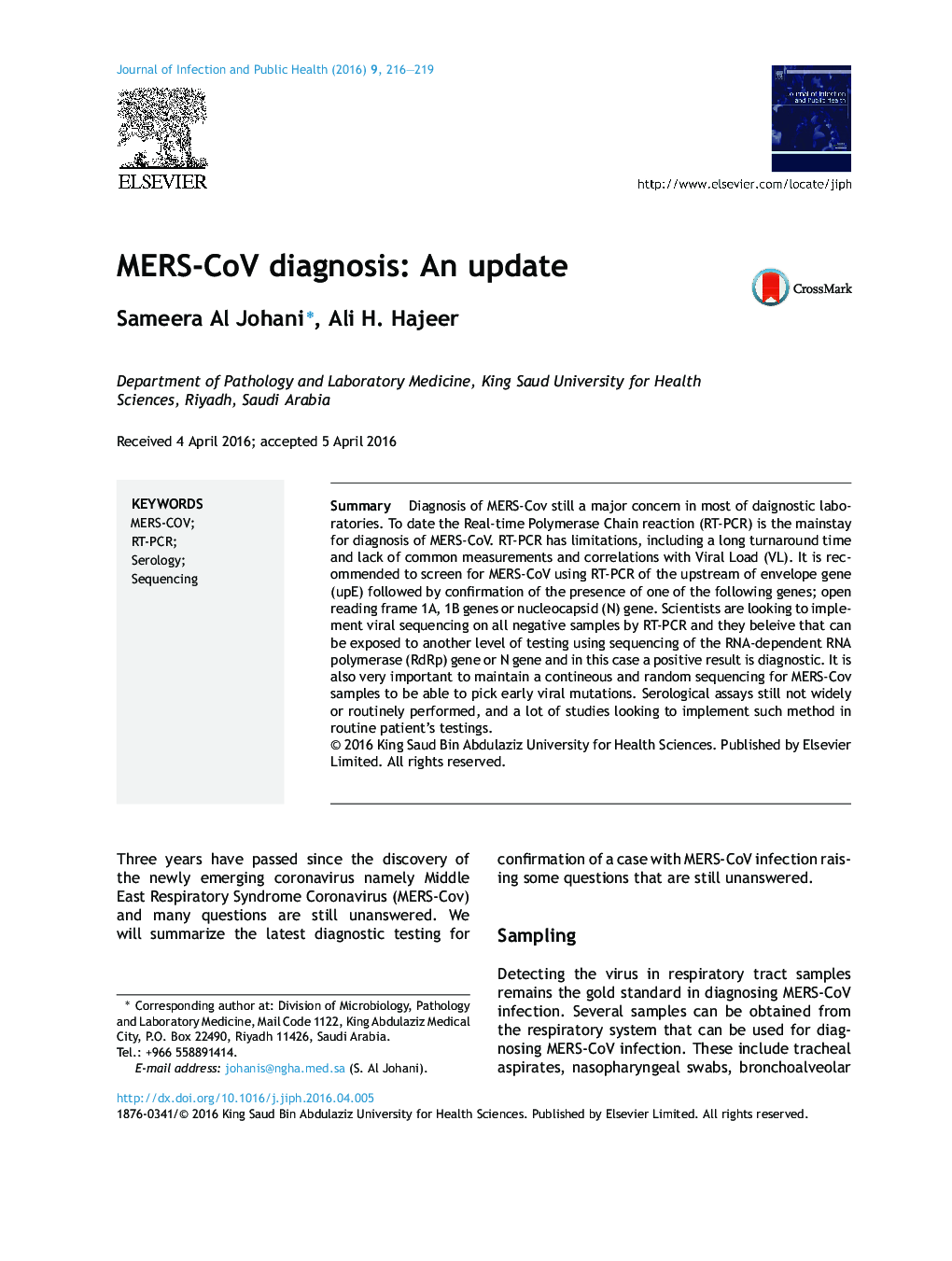| Article ID | Journal | Published Year | Pages | File Type |
|---|---|---|---|---|
| 3405821 | Journal of Infection and Public Health | 2016 | 4 Pages |
SummaryDiagnosis of MERS-Cov still a major concern in most of daignostic laboratories. To date the Real-time Polymerase Chain reaction (RT-PCR) is the mainstay for diagnosis of MERS-CoV. RT-PCR has limitations, including a long turnaround time and lack of common measurements and correlations with Viral Load (VL). It is recommended to screen for MERS-CoV using RT-PCR of the upstream of envelope gene (upE) followed by confirmation of the presence of one of the following genes; open reading frame 1A, 1B genes or nucleocapsid (N) gene. Scientists are looking to implement viral sequencing on all negative samples by RT-PCR and they beleive that can be exposed to another level of testing using sequencing of the RNA-dependent RNA polymerase (RdRp) gene or N gene and in this case a positive result is diagnostic. It is also very important to maintain a contineous and random sequencing for MERS-Cov samples to be able to pick early viral mutations. Serological assays still not widely or routinely performed, and a lot of studies looking to implement such method in routine patient's testings.
